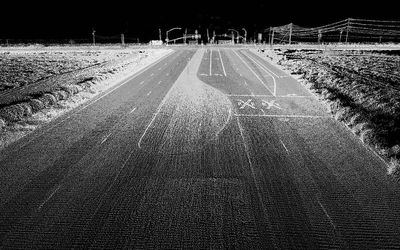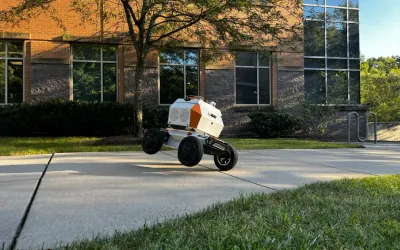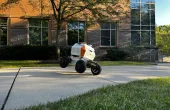Hoobox Wheelie
The Wheelie is a kit that allows people to drive their wheelchair using facial expressions
Technical Specifications
| Intel RealSense cameras | |
| Motorized wheelchair | |
| Running on Intel NUC | |
| OpenVINO toolkit |
Overview
The Wheelie 7 robotic assistant is designed to aid people who have limited mobility. The device recognizes facial expressions captured by a special digital camera and converts them into commands to move a motorized wheelchair.
Hoobox Robotics collaborated with Intel to produce an adapter kit that allows almost any electric wheelchair to be controlled by the user's facial expressions.
The Wheelie 7 kit equips a wheelchair with artificial intelligence to detect the user's expressions and process the data in real-time to direct the movement of the chair. At least five different face moves are required to effectively control Wheelie 7. Each of these facial moves is tied to a directional command (i.e. forward, back, left, right, or stop), raising the eyebrows, wrinkling the nose or puckering the lips as if for a kiss are among the repertoire of 10 gestures recognised by the prototype Wheelie 7. Users can customise which of the 10 expressions they want to employ for each possible direction, so they can play to their strengths.
The facial expression system detect things like spasms and delirium are also being used in trials at Albert Einstein Hospital in São Paulo.
According to Pinheiro, he said “If you have a facial recognition system company right now, it’s not enough to only deal with facial recognition if you are not detecting human behaviors,” he said. “We believe that in the future, many medical device and a lot of health care applications will have some kind of facial recognition software to detect facial expressions and predict human behavior.”
In addition to use of the RealSense camera, Wheelie relies on OpenVINO computer vision toolkit and Core processors. Hoobox has received support from the Intel AI for Social Good initiative.
Created in April, 2018 the AI for Social Good initiative at Intel seeks to support startups and projects looking to solve a variety of problems.
References
Hoobox website









